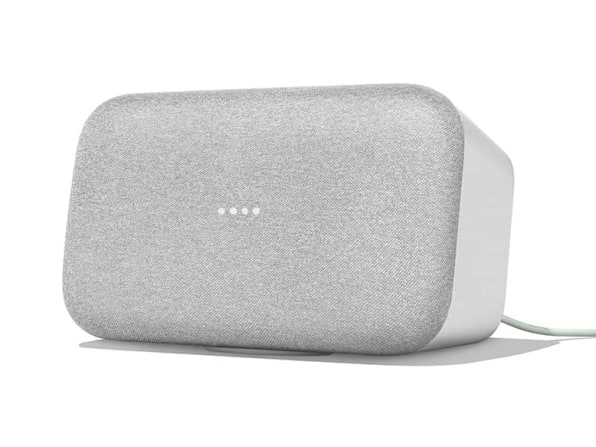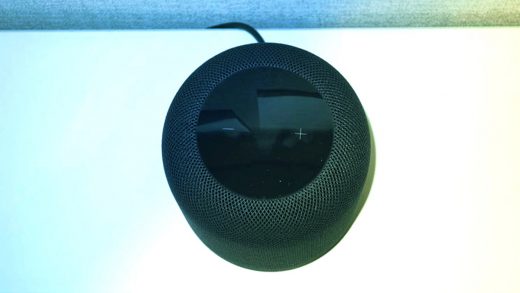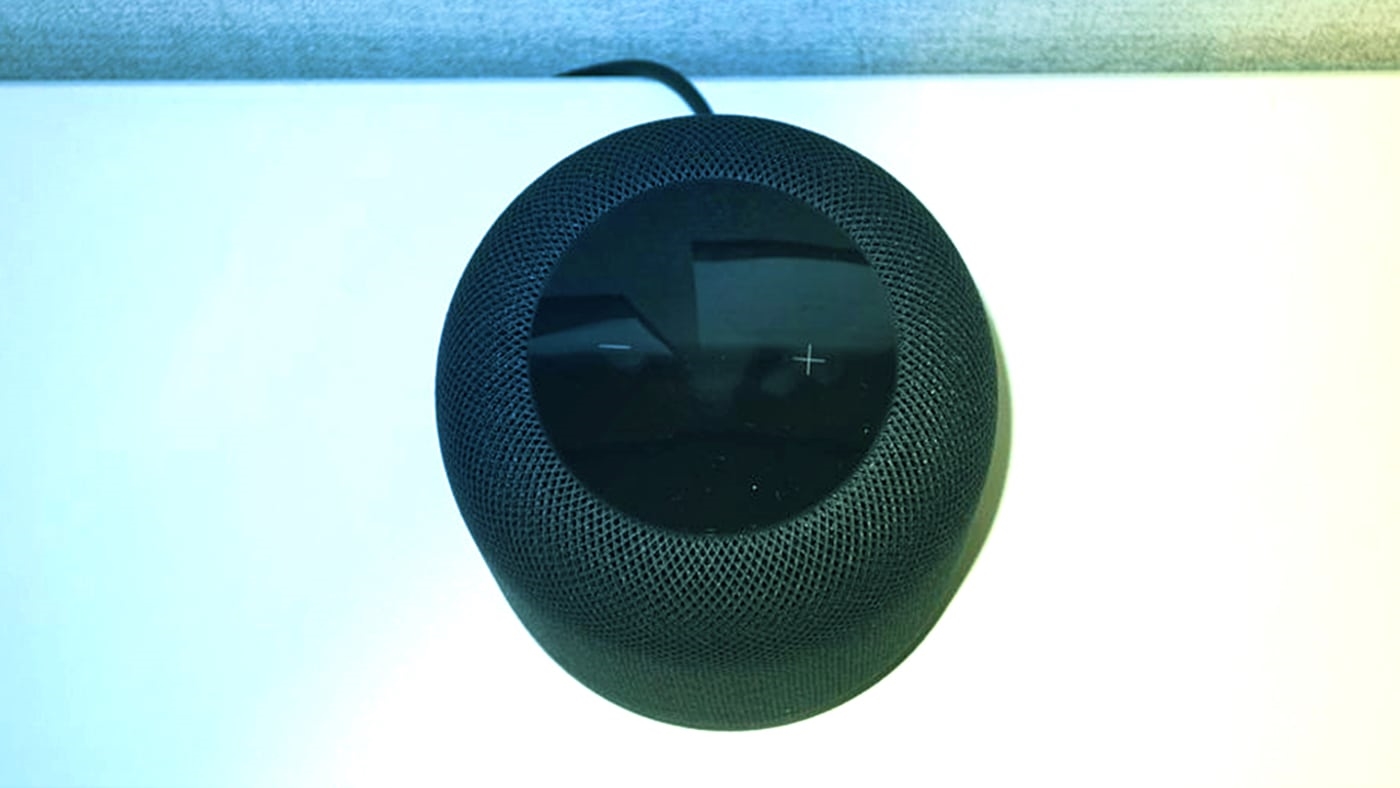Google Home Exec Says Some Of HomePod’s Magic Is Just Marketing
In the wake of the clatter over Apple’s new HomePod speaker (and after I wrote a few articles about its sonic capabilities), Google invited me out to Mountain View for some “transparency” around its own high-end smart speaker, the Google Home Max. They also sat me down in a sound chamber for a blind listening test (more about that later) pitting the Max against the HomePod.
Google’s $400 Home Max speaker came out four months before the $350 HomePod, and has a very different approach to filling rooms with sound. The Max is a directional speaker with two 4.5-inch drivers and two .7-inch tweeters facing out from a steel box enclosure. The HomePod has a 360-degree design, with a single 4-inch driver pointed straight up from the top part of the device, and a ring of seven tweeters facing out (and slightly up) in all directions from the bottom part.
Without ever saying the words Apple or HomePod, Google Home Max product manager Chris Chan compares the two companies’ different approaches to tastes in wine. “There is subjectivity to wine tasting but there are very objective components. You know what bad wine is. There is spoiled wine. But there is this murky middle where marketing can kind of do a lot to inject confusion.”
Chan and his team are skeptical of the HomePod’s 360 design, which they say doesn’t fit with the way most people place smart speakers in the home. “In every single case they’re putting their speakers close to walls,” Chan told me. “They don’t want it on the coffee table as this sort of centerpiece in their home that people kind of gather around like a fireplace. It’s on your nightstand, it’s alongside your kitchen appliances.”
From a pure audio perspective, Chan says the 360-degree speaker design has its ups and downs. “When you’re outputting the same power in every direction there is a greater chance of a consistent sound from every space,” he said. “But you also get that because it’s a mono speaker and it’s the same thing from a certain point and that’s not necessarily valuable.”
(Update: Apple says the HomePod is not a mono speaker as it preserves all of the stereo content in a recording. It uses its beam former to render left/right separation, Apple explains.)

Correcting For Walls
Walls are a problem for both the Max and the HomePod. Imagine low-frequency sound as large waves of water flowing out from the speaker. As they emerge, they immediately hit the wall and come back on themselves. This causes the bass to become magnified and out of proportion with the rest of the sounds in the music.
Both the HomePod and the Max contain arrays of microphones to detect that, then send information to their respective processors, which compensate by altering (or “tuning”) the bass output of the speaker. But the Max’s drivers and tweeters are directional; they can face away from a nearby wall, physically separated from it by their steel speaker enclosure. The HomePod’s are not, so it’s likely it must do a little more compensating than the Max.
“Placing” Sound
The HomePod goes much further than correcting for recalcitrant bass sound. Apple suggests the HomePod tunes its sound output to create a consistent listening experience throughout the room regardless of where the listener is standing. (In Apple’s words, it creates “an all-encompassing sense of space—and consistent, high-fidelity audio everywhere in the room.”) This involves using some very fancy audio processing technology to tune high frequency sounds in the room as well.
Apple says the HomePod places “direct” sounds that are primary to the mix (like a lead vocals) in the middle of the room.
Chan says the wavelengths of low-frequency sound waves are large–often a meter or two long. So, he says, low frequency sounds sound pretty much the same regardless of where the listener is standing in the room.
The HomePod diffuses higher (“ambient”) sounds throughout the room. (Again, in Apple’s words: “. . . ambient sound is diffused into left and right channels and bounced off the wall . . . so your music sounds amazing, wherever you are in the room.”)
Chan says he and his team are skeptical that equalization can be used to correct for room effects with high-pitched sounds. “In terms of the high frequency ranges, there is no way for us to know where you are, so there is no way to correct with that stuff. And anyone that’s claiming there is, is, well…”
High frequency sound waves are, by nature, a bit chaotic, Chan told me. “The wavelengths are so much shorter, they bounce around everywhere, depending on where you are, depending on what objects are there, and so there are so many barriers to high frequencies sounding consistent within your position.”
The Google engineers bought a HomePod and did some testing “out of idle curiosity,” Chan said. Still, it was clear to me that Chan and his team have respect for the HomePod. He’s also quick to point out that the design approach the Apple engineers chose has its strong points.
It was my impression that Chan and his team have even learned from the HomePod. “You have to remember all of this stuff [the Max technology] was developed in an environment without HomePod,” Chan said, “in a time when we were defining a new category.”
My Blind Sound Test
After I spoke with Chan I was taken into an airtight room for the blind sound test. The Google people sat me down in front of a black crepe curtain hiding a Google Home Max and a HomePod. They gave me a clicker device so that I could switch back and forth between the devices at will.
In this test, the Max compared very well to the HomePod. But there were reasons for this. I was sitting directly in front of the Max at ear level, so that all its output was coming right at me. And remember, the Max is a directional speaker. Also, the room was dead; that is, the walls were covered with sound board to absorb as much sound as possible. This may have been a bad environment for the airy, ambient room sound the HomePod is designed to create.
So, my honest opinion: If you can afford a pair of Maxes to place on a shelf a good distance apart in the room, you will get a very satisfying stereo experience. However, if you can afford only one device, I continue to believe the HomePod does a remarkable job of filling a room with sound and recreating a stereo effect–largely with software.
And finally, it’s fair to mention a couple of audio-enabling features that the Max offers and the HomePod doesn’t. The Max has a 3.5mm port that can be used to connect a turntable or CD player. And, importantly, the Max lets you connect your smartphone or tablet via standard Bluetooth, so you can play tracks from your own music service or music library. The HomePod requires a proprietary AirPlay connection that excludes non-iDevices.
Correction: A previous version of this story said Apple’s HomePod places bass sounds in the middle of the room. Actually it directs primary sounds like lead vocals and solo horns to the middle. Those sounds aren’t necessarily low-frequency sounds. More often they are mid-range or higher frequency sounds.
(18)



